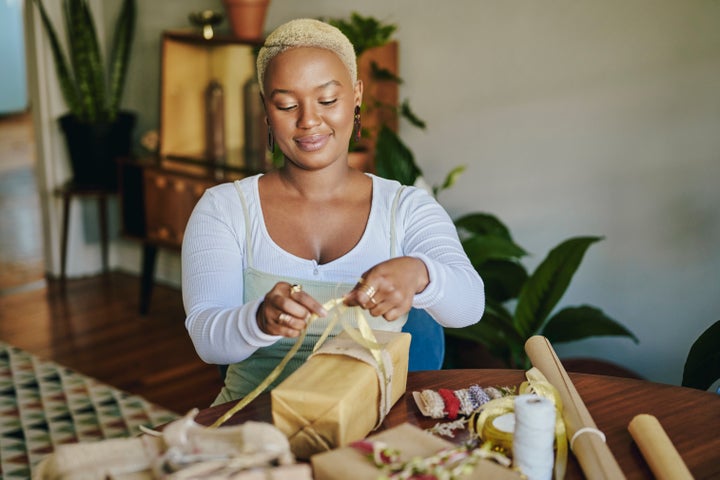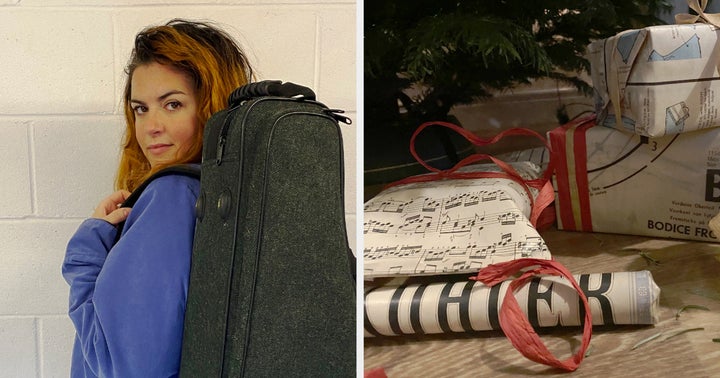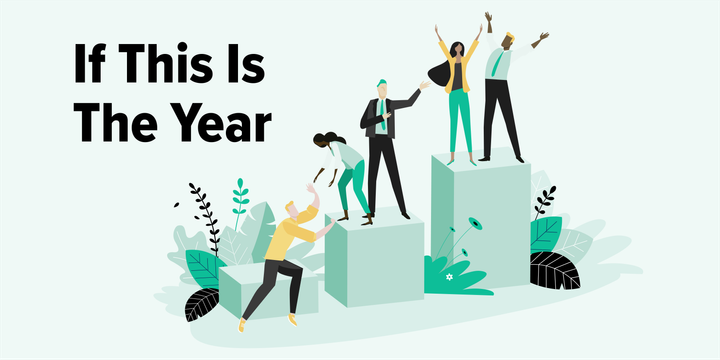
You’re reading If This Is The Year, a series of guides to tackling those big life goals the pandemic has put on hold – with the help of experts, we’re breaking things down into more manageable steps to take in 2022.
January sees many of us reflecting on who we’d like to be in 2022. And for some, that’ll mean pledging to become a greener person.
But the idea of trying to live an environmentally-friendly life can seem overwhelming or unachievable at first, unless you break it down into small steps.
Instead of overhauling every element of your world at once (and soon becoming demotivated), how about trying to go green gradually within a year?
When it comes to achieving a big goal like this, you have to prepare your mind for it. Petrice Jones, co-founder of the sustainable social enterprise The One Movement, says this starts with changing our relationship with stuff and new things.
“Sometimes new things can be help you live more sustainably, like a new water bottle that you love taking out with you can help you stop using single-use water bottles, whereas an old tomato sauce jar might not inspire you to do so,” he says. “But whilst new fancy mason jars might look nice in your house, they’re likely no more useful than your tomato jar.”
Jones believes that the decisions we make about our lives and purchases are fundamentally rooted in what we believe and value about this world. “Spend with companies you align with. Let go of impulsivity. Forget FOMO - enjoy missing out on buying pointless stuff you don’t actually care about,” he says.
“I dare say it’s more about deciding what kind of person you want to be and what kind of world you want to live in. Every folk on the road will decide where you (and we) are headed.”
Though this may sound simple, you’ll undercover some difficulties along the way. What happens if we get tempted to buy from a fast-fashion brand we love?
Check in with yourself if you’re drawn to the item because of familiarity instead of need, says Jones.
“We like what we’re used to and we don’t want it to change – you will find resistance to the sacrifices you make to live in line with your values,” he says. “The good news is you almost exclusively sacrifice things that are incapable of bringing you long-term happiness.”
Another difficulty we might face is money. Many people are put off going green because they think it’s an expensive lifestyle, but it doesn’t have to be.
“If you go out and try to replace everything with ‘sustainable options’ then ‘living sustainably’ becomes expensive,” says Jones. “Use what you have. The more sustainable options are usually more expensive, but if you buy less of what you don’t need, hopefully, you’ll have a few extra dollars for the things you do.”
Though it may be a difficult transition, going green this year is more than realistic. “You can’t control everything around you, but you can control your intention. So don’t lose your mind if you forget to say ‘no straw’ to the waiter or accidentally buy something full of palm oil. It will happen, you will forget, you will make mistakes, often,” says Jones.
“You’ll even give in to the less stainable, more convenient choice at some point. You’re human. Let it go. Commit to doing your best always, but give yourself a break. The odds are stacked against you and you’re probably doing just fine.”
So, what are some steps we can take towards being green in 2021?
Step 1 – Engage in personal development
Self-esteem genuinely affects how much we buy and how much we waste, says Jones.
“It’s well known now that our self-confidence has been systematically attacked for profit. The MO [modus operandi] is to steal your confidence and give you insecurity for free, then sell you back a shadow of your self-esteem in the form of materialism,” he explains.
“Finding ways to genuinely fall in love with yourself and develop adequacy on an intrinsic level will completely change your approach to buying stuff.”
Next time you go to buy something, he recommends asking yourself why you’re really buying it.
“If we’re all really honest, the answers will often lie in our insecurities,” he says. “It sounds a bit airy-fairy, I know, but it might just be one of your most powerful tools to a lower impact lifestyle. Invest in your heart; it’s good for the planet.”
Step 2 - Buy used or use what you have
The most sustainable option is usually the one where you don’t buy anything new. And the new sustainable option is often no more useful than something you have at home, says Jones.
“Though it might be more satisfying to get a nice new sustainable product the truth is, that feeling will go away and what you’re left with will become as mundane as the thing you already had,” he says.
“So don’t throw out all your plastic spray bottles or containers and buy new glass ones. Or sell clothes just so you can buy new ‘sustainable’ ones. Living more sustainably is the goal, not looking more sustainable.”
If you do want to add an item to your home or wardrobe, Jones recommends buying something second-hand/vintage, particularly with clothing.
“There are literally millions (maybe even billions) of vintage garments (and home furnishings) out there,” he says. “Most are better made and with more character than the majority of what is being made today. We’re by no means perfect in my house, but almost 100% of the furniture in our place is vintage, antique, used, or found on the street – our place looks great.”
Step 3 - Look out for greenwashing
Greenwashing is when a company makes vague sustainability claims but their practices don’t necessarily add up.
“Many out there are more concerned with the optics of sustainability and the markets they open up than using business to make real change,” says Jones. Observe generalised sweeping language like ‘natural’ and go a little deeper before buying. Green writing on packaging doesn’t mean a thing.”
Researching companies and their subsidiaries is important. In this multinational world, brands you love are often being bought up by conglomerates without your knowledge.
“Sooner or later the parent company modus operandi will become the brand’s modus operandi,” says Jones. “Knowing who owes brands you buy is a good step toward making the right purchases. Conscious consumers are educated consumers.”
Step 4 - Look for enterprises that give-back
Jones recommends looking for brands and enterprises that give back – which is no surprise, as his own organisation does just that.
The One Movement sells ‘The One Bottle’, a reusable water bottle that funds the collection and transformation of ocean-bound plastic into recycled plastic homes for homeless waste collectors.
“It’s not just us; there are companies out there that care about more than just profit,” Jones says. “None are perfect, but I think a genuine commitment to doing better by the planet, and more importantly, our fellow humans will benefit us as a species. I believe, in business, pursuing a purpose is crucial.”
Step 5 - Pay attention to your consumption habits.
“You know how you feel when you buy something on Amazon when you could have gotten it from somewhere local. That feeling is telling you something about your choices,” says Jones.
“It’s not always easy, but as much as you can, spend time trying to find people and companies you can feel good about. Accept that a lot of the time we don’t really need that thing, or need it immediately. Wait and do research to make the decisions on bigger purchases and accept slow shipping if you’re ordering online. ”
A tip from someone who’s done it
In 2021, Thea Paraskevaides, 35, from Sussex made a commitment to buying all clothes and gifts second hand. “People think that ‘going green’ means more expensive. It’s not true at all!” the owner of Beaumont Music tells HuffPost.
“From charity shops to Facebook Marketplace, you can find some real gems, it just takes a little more thought. I receive so many compliments on my £3.50 coat! And the terrarium I made for a family member using pieces from my garden went down a treat! Think outside the box and new should not be the default!”

She also pledged to only use recycled materials for wrapping paper. “I’m a musician and have lots of sheet music laying around, so it gave me the idea to use those sheets to make some beautiful upcycled wrapping paper. Everybody loved it so much that I’m thinking of turning it into a side-hustle!” she explains.
“It’s easy to do your own too, get hold of some old music, or books, or even newspapers. Cut it into sections and glue together using an organic glue (avoid sellotape, it stops the paper being recyclable!) like Gum Arabica. I then pressed using an iron and rolled it up -–ta-da!”
